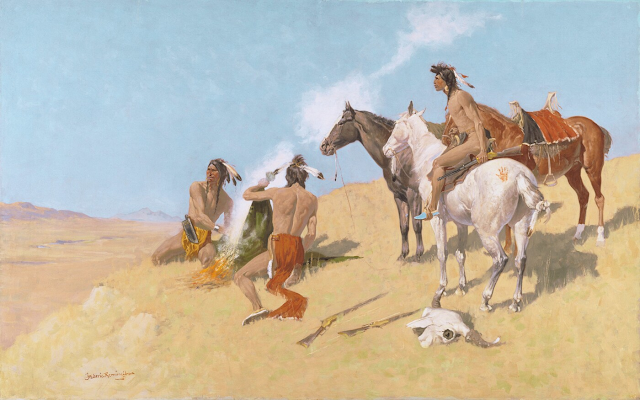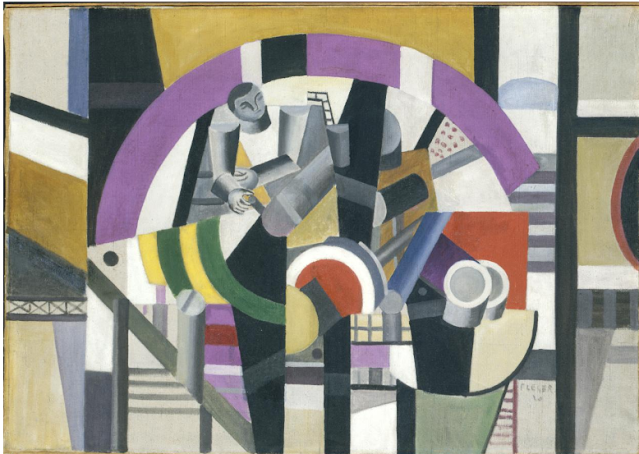Frederick Remington, "The Smoke Signal"
This week we are a long way from the streets of Paris, where we were last week. Our artist is Frederick Remington (1861-1909) who made a career memorializing the American West. He was an interesting man with a colorful history. He lived in several areas of our country, but grew up and eventually returned to the East, mainly New York and Connecticut. I was unable to locate any specific information about the exact location of this painting. It was done very late in his career (1905) so it is likely he drew from former sketches. As an artist he dipped into many areas. During his life his illustrations were published in magazines, but he also wrote novels, and today he is often remembered for his bronze sculptures.
I selected "The Smoke Signal" for this week, because Remington has successfully created a drama, just as Manet did last week. As captivating as the men and horses are, I am drawn to the landscape on the left side. Why? Because every thing is pointing or looking that way. The long shadows seem to indicate the sun is behind us, to our left and it is probably late afternoon. My guess is that we, the viewer, are looking north, so the vista of interest to the men is west. A slight breeze from the west is moving the smoke up and to the east. Just like last week, Remington provides a dramatic situation, leaving us the fun of wondering and pondering.
The composition is interesting because most of the "weight" is on the right side. But there is just enough of the distant land and it is so essential to the meaning, that it balances perfectly. Remington was a very skillful artist and by 1905 he knew his subject well. Looking closely at the men and horses we learn a lot about life in the West. I find it interesting that each rider has a different color horse, and that the white horse has what appears to be a hand print on his rear and a feather tied to his tail.
The year this painting was done, Remington was awarded a whole issue of Collier's Magazine entirely devoted to his recent work. I do not know for sure if this image was included. This is a oil on canvas completed in 1905. It is part of the permanent collection of the Amon Carter Museum in Fort Worth Texas. There are also original lithographs of this image at other museums. The oil painting measures 30 3/8 inches high and 48 1/4 inches wide, so a sizable work.
Make Art a part of your life, it's a beautiful thing to do.




I have always admired Remington's work. He is passionate about his subject matter and gives the American Indians (and cowboys) such dignity and respect. His paintings are also always authentic. The skull seems important to the composition as well as the light lumps on the lower left. All other figures break through the light blue sky and warm sand right across the center. Smoke signals must have required skill, since the wrong message might be dangerous. I recall a print of his hanging in my grandmother's house for years, and his sculptures on many office desks! Very talented and skillful artist who recorded much important history.
ReplyDeleteYou are so right about the skull. It seems to be the point of a shape, almost a triangle, or if you include the smoke, a square. All the "objects" in the painting are confined inside this shape, accentuating how important the land, vista is to the meaning. Always great observations and comments, Char. Thanks!
Delete